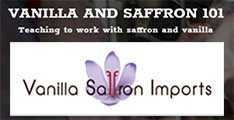Richard Moreno. And that's a large part of the charm.
You can find yourself seated adjacent to anyone from a visiting mining engineer to a local insurance salesman. While not every Basque restaurant operates that way, there are plenty that offer dining in that traditional boardinghouse way.
Many of Nevada's Basque hotels were originally started to offer a home-away-from-home for Basque sheepherders, who hailed from a region in Europe bordering France and Spain.
The first Basques arrived in Nevada in the 1890s, during a time when the state's vital mining industry had waned and agriculture was becoming a more important part of the economy.
The work was demanding and lonely, requiring the sheepherder to spend months in the most remote, isolated, often desolate parts of Nevada, without much companionship.
As a result of such conditions, it was almost impossible for most Basques to assimilate into American society, as did many other immigrants. Obviously, opportunities for establishing a family were also extremely limited.
Many Basques looked upon their American experience as an opportunity to escape poverty at home and, hopefully, make enough money to be able to return home to buy a farm or other business.
All of these factors helped create the need for the Basque hotel. Not every Basque immigrant returned to the Pyrenees. Some sent for wives and family and chose to establish businesses in America, including small hotels and boardinghouses.
These became the focus of Basque culture in a community. Sheepmen, down from the hills, would flock to the hotels for a warm meal, soft bed and an opportunity to catch up on news from home, read Basque newspapers and speak in their native tongue.
By the beginning of this century, Basque boardinghouses had cropped up in a number of Nevada communities, including Winnemucca, Elko, Reno and Gardnerville.
Among the better known Basque dining spots are the Ormachea's Dinner House and the Martin Hotel in Winnemucca; the Star Hotel and Toki Ona in Elko; the Basque Restaurant, the Carson Valley Country Club and the J.T. Bar in Gardnerville; and Louis' Basque Corner in Reno.
A couple of years ago, I was dining at the Ely Hotel, a Basque boardinghouse and restaurant that has since closed. It was early, and the owner hadn't yet set up for dinner, so I sat at the bar and ordered a Picon punch.
Now a Picon punch is a powerful drink. A bartender will tell you that a good Picon punch is made of a European nut liquor named "Amer Picon" (not related to the pecan, which is a different nut) that is mixed with a splash of grenadine, a bit of brandy and soda water.
One Picon punch will make you late for dinner. Two will have you arguing with the bartender about the strength of the "Euro" versus the American dollar and after three, you'll be singing the Basque national anthem.
No one has ever walked away hungry from a Basque meal. In addition to seemingly endless courses, meals include as much of any particular dish that you might want to eat.
Specific types and flavors of food may vary, but at most Basque restaurants, you start with a basket of fresh French bread and a tureen of soup, followed by a large salad, a plate of spaghetti or vermicelli or some other pasta, a bucket of beans, platters of French fries, a vegetable side dish and a huge slab of broiled beef or lamb steak.
After that feast, some restaurants will bring you sliced apples and cheese and ask if you'd like a bowl of ice cream. At some point in the meal, the waitress or waiter will also bring you a carafe of hearty red wine. Obviously, the secret to enjoying it all is to pace yourself.
In Nevada, the Basques have adapted to their surroundings and serve dishes that reflect what's found in the state. The result is a lot of beef, pork and lamb dishes as well as rabbit, trout, sweetbreads (animal pancreas), beef tongue and mountain oysters (bull or sheep testes).
Of course, you never know who you will sit next to during one of these Basque culinary overloads. Once, in Ely, I found myself next to three visiting oil engineers who had been testing an area for oil reserves.
Their talk of sonic thumpers and other electronic wizardry turned out to be far more interesting than the day-old newspaper I'd planned to read.
However, I left after they'd finished their third glasses of Picon punch and were starting to sing that anthem.
Rich Moreno writes about the places and people that make Nevada unique.



 Lagun bati bidali
Lagun bati bidali Komentarioa gehitu
Komentarioa gehitu








